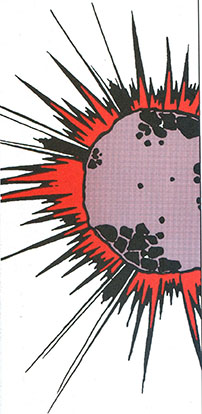
 IAS
IAS
Feminism … Anarchism … Anarchafeminism, by Cindy Crabb
This three part piece by Cindy Crabb appears in the Anarcha-Feminisms issue of Perspectives on Anarchist Theory (N.29) available from AK Press.

Anarcha-Feminisms, Introduction
by the Perspectives Collective
This is the introduction to the anarcha-feminisms issue of Perspectives on Anarchist Theory (N.29). The whole issue is available again from AK Press here! Ok, editorial collective. Let’s talk this through. So, what are anarcha-feminisms and why do they need their own Perspectives issue? … Read more
Listening for a Multiplicity of Quiet Rumors Within the Anarcha-Feminist Archive: A Review of Quiet Rumors: An Anarcha-Feminist Reader, New Edition (AK Press, 2012), by Raeanna Gleason-Salguero

In their 1971 manifesto, “Anarcha-Feminism: Two Statements,” the Red Rose and Black Maria Black Rose Anarcho-Feminists define anarchism as “the affirmation of human freedom and dignity expressed in a negative, cautionary term signifying that no person should rule or dominate another person,” and they encourage libertarian socialist feminists to cultivate “all the groovy things people can do and build together, once they are able to combine efforts and resources on the basis of common interest, rationality, and creativity” (15). In a radical response to the repressive, violent, and “pathological structure” of the State, they conclude this manifesto with a demand for “ALL POWER TO THE IMAGINATION!” (17) Anthologized within the Dark Star Collective’s Quiet Rumors: An Anarchist-Feminist Reader, the Red Rose and Black Maria Black Rose manifesto opens the collection as a reminder of the need to be ever creative in our feminist approaches. Also, to collectively imagine and manifest complex transformations in how people might relate to one another outside the crushing structures of power and hierarchical notions of human value.
Brooding Over Revolution and Bending Realities: Sci Fi as Social Movement. A Review of Octavia's Brood: Science Fiction Stories from Social Justice Movements (2015, AK Press/IAS) and Sisters of the Revolution: A Feminist Speculative Fiction Anthology (2015, PM Press), by Kim Smith
This book review appears in the current issue of Perspectives on Anarchist Theory (N. 29, on anarcha-feminisms) available here, from AK Press.
Too often I find myself giving into the urgency of organizing, of how this struggle now takes priority over pausing, imagining, reorganizing, reorienting, creating and recreating new worlds, new ways of relating. Of course organizers everywhere are also, everyday, creating many other worlds within this one, but too often it feels as though what takes center-stage in our struggles are the analyses, critiques, and (of course) the too many, too long meetings that stand in for building something different. Spaces for risky, non-utilitarian creativity and inspiration are too often sidelined as inessential. Maybe the appearance of two sci fi books (both from radical presses whose mainstays are political non-fiction) suggests that sci fi is resurfacing as a relevant touchstone for contemporary political movements, signaling perhaps a bit more recognition of creative expression in explicitly political spaces. What exactly is the connection between sci-fi and radical movements and organizing? This question (and some ideas about how to answer it) emerged for me while reading these two humbling anthologies, which I’ll get to in a moment, but first, a little more about these books.

While Octavia’s Brood (2015, AK Press/IAS) and Sisters of the Revolution (2015, PM Press) appear initially as similar offerings from similar presses, their differences are quite profound. While both are compilations of overtly politically-engaged sci fi, the only near-overlap of content is that Sisters of the Revolution includes a brilliant story (one of the strongest in the collection) from the other book’s namesake, Octavia Butler. Beyond this, they both specifically include writers ‘on the margins’ of mainstream science fiction; in this way, many of the stories in each could be included in the other. The likening of one to the other is otherwise quite superficial, however, as the spirits that animate each anthology as a whole are clearly very different. Sisters is an historical compilation of pieces identified as “feminist speculative fiction” by its editors, Ann and Jeff VanderMeer, and seeks to bolster a feminist archive of science fiction, whereas Brood is “visionary fiction,” highly cultural production emerging from and meant to feedback into contemporary social justice struggles. Taken each as collections, they each task science fiction with a different function in contemporary politics, and in doing so fill very different niches, and leave the reader with different orientations towards social change and how it happens.
Staying Power: The Institute for Anarchist Studies, Twenty Years Running, by Michelle Renee Matisons
Regarding the earliest days of the IAS, the story is quite simple. I was living in Greenpoint, Brooklyn when Chuck Morse called me to ask if I’d like to work with him on a new project. He explained his idea for an organization that would … Read more
Perspectives' Anarcha-Feminisms Issue Reviewed, by Michelle Renee Matisons
Michelle Renee Matisons reviews the latest issue of Perspectives on Anarchist Theory, N. 29, on the theme of anarcha-feminisms, in Counterpunch. She says, “Enter Perspectives, which should be read as part of the ongoing effort to expand anarcha-feminist ideas. True to form for the IAS, the issue offers a thoughtful cross-section of history and theory engaged in anarchist and popular movements: education, prisons, labor, health care, ecology, and Indigenous resistance are all included in Perspectives. In and of itself, given the challenging conditions of the academic/movement rift, Perspectives is valuable because it is grounded in nuts and bolts movement work, while also drawing from relevant academic resources as well.”
How a Queer Liberation Collective has Stayed Radical for Almost 40 Years, by Toshio Meronek
The first of the four writing projects that the Institute for Anarchist Studies funded in early 2016 has been written and posted in Waging Nonviolence here!

100 in Anarchist Years: The IAS at 20
by Paul Messersmith-Glavin
The Institute for Anarchist Studies (IAS) has received applications for writing grants throughout various waves of organizing over the last two decades. From Zapatista solidarity organizers in the nineties, to anti-capitalist globalization activists in the early ‘00s, Occupy folks over the last several years, and … Read more





